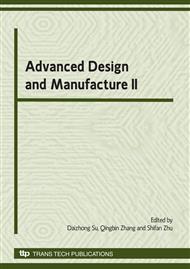p.417
p.421
p.425
p.429
p.433
p.437
p.441
p.445
p.449
Numerical Simulations of Friction Stir Welding Process and Subsequent Post Weld Cold Rolling Process
Abstract:
A sequential coupled three-dimensional thermo-mechanical analysis was conducted first to simulate friction stir welding (FSW) of aluminum alloy. In thermal analysis, the model included adaptive heat source, contact heat transfer both between work piece and clamps and between work piece and backing board etc; in the mechanical analysis, the model involved contact interaction both between work piece and clamps and between work piece and backing board, mechanical load of tool etc. The simulation results indicate that the longitudinal residual stress is unsymmetrical about weld centerline; the magnitude of longitudinal residual stress for FSW process is lower than that for fusion welding process. Based on simulated results of FSW process, a three-dimensional elastic-plastic analysis was then carried out to simulate rolling process, the simulation result show that rolling process not only causes a marked reduction in the longitudinal tensile residual but also reverse the sign of the longitudinal residual stress.
Info:
Periodical:
Pages:
433-436
Citation:
Online since:
October 2009
Authors:
Price:
Сopyright:
© 2010 Trans Tech Publications Ltd. All Rights Reserved
Share:
Citation:


